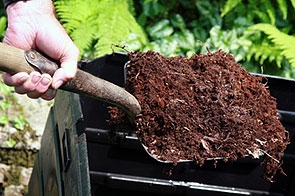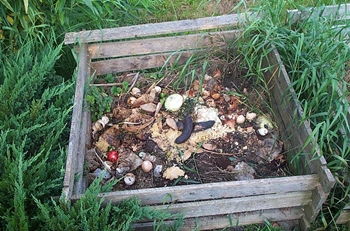
Composting
Learn How To Compost
In 340 B.C. the great Greek historian Herodotus noted that the soils of Egypt were the foundation on which Egyptian civilization was built. Just like ancient Egypt’s civilization relied on the soils so do every gardeners success. Some how people have been able to forget the importance of soil cultivation at times, does The Dust Bowl sound familiar? For gardeners composting is one of the greatest ways they can tend to the quality of their soil. Composting can be an intimidating thing to take on for the beginning gardener and through this article I’m going to try to demystify some of the keys to beginning a compost bin.
Benefits Of Composting
With a compost pile in your yard you will have a constant supply organic material ready to be added to your top soil. By mixing fresh compost into your soil you can amend the soil structure, bringing sandy and clay soils closer to the desired loam structure.
Adding compost to your soil has the ability to regenerate poor conditions. Micro-organisms like bacteria and fungi help break down your compost into humus. Humus is a nutrient rich material that holds water well, both conditions important to gardens. Some studies have even show that compost can keep plant disease and pests at bay, this can cut your need for chemical fertilizers, and give gardeners bigger harvests.
Pollution Prevention Through Composting
A benefit of composting is the reduced need to send spent materials to landfills, reducing the production of methane and leachate. Storm-water runoff is a huge problem and keeping a compost bin reduces the amount of containment’s that will be included in the storm-water runoff. Adding compost to embankments and parallel to creeks, lakes, and rivers can cut erosion. By building your own compost bin you reduce the use of landfills which will help reduce the need to build more landfills.

composting bin
5 Keys To The Composting Process
Before anyone takes on starting a new compost pile they need to understand these 5 keys to composting. If you fail to understand these principles your compost can fail and I want every one to succeed. So before you get started lets cover the 5 principles:
- Nutrient balance and Feed stock. A good balance between green organic material (grass, food scraps, and manure) and brown organic material (dry leaves, wood chips, branches). Green organic materials contain high amounts of nitrogen while brown organic material has high amounts of carbon. Getting a good balance between these two types of materials may take some experimentation on your part, but soon enough you’ll develop a feel for this.
- Material size. If you take the time to tear up, break, or shred the materials you add to the compost pil you will increase the surface area which will allow the microorganisms to feed on the material at a greater speed. By decreasing the size of the materials inside of your pile you also improve the insulation of the pile, making it easier to reach the optimal temperature (see below) for your compost pile.
- Moisture levels. A good supply of moisture is needed to help the microorganisms inside your compost. If you choose to compost inside of a closed bin with a roof you may need to water your compost pile occasionally.
- Oxygen flow. This is the step you will really want to think about before starting your compost pile. Aerating the pile is important, it allows for decomposition to take place at an increased rate. Over aerating the pile is also a concern though as that could dry it out and stop the composting process. You can use a pitchfork to turn your pile over, you could place pipes underneath your pile, or create a base layer with larger pieces of organic material like wood chips or shredded newspapers.
- Temperature. Those microorganisms that are so key to the composting process are pretty picky about the temperature they will work in. Keeping your compost pile in the right temperature range will help speed up composting and crush pathogens and weed seeds. The temperature inside of your compost pile can actually get as high as 140° F. If you don’t keep your pile at a good temperature rather than experience the benefits of composting your experience the downside of rotting.

What to compost
Source: Black Thumb Gardener – Composting | A Gardener Without Compost is No Gardener at All






